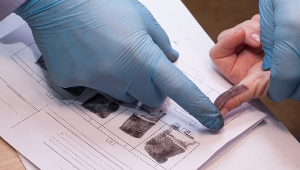
ACE-V (Analysis, Comparison, Evaluation and Verification) is a scientific method for the examination and documentation of latent fingerprints.
The ACE-V method was first introduced in the 1980s by David Ashbaugh, a renowned Canadian fingerprint expert. Since then, it became the most common method of fingerprint examination worldwide.
The purpose of the ACE-V method is to give more structure and objectivity to the exercise of print comparison, combining the factors required for a sound scientific practice. The ACE-V examination method is composed of the following steps:
1. Analysis
The examiner assesses the unknown print to determine whether or not it is suitable for comparison. This involves the preliminary assessment of a number of factors like the surface material or, the substance of the print itself.
2. Comparison
The investigator analyses characteristic attributes of the fingerprints and identifies conformities between the found and the known latent prints.
3. Evaluation
The examiner answers a few questions:
– are there any conformities between the revealed print and the known ones?
– is there a sufficient number of minutiae to identify the unique correlation?
There are only four possible conclusions for the examiner:
The latent print is
1. identified or individualized
2. not identified or excluded
3. inconclusive
4. verified
If an identification is made, the conclusion must be verified by peer review of another qualified fingerprint examiner. This ensures the proper application of the objective scientific method and confirms the results of the first examiner.



